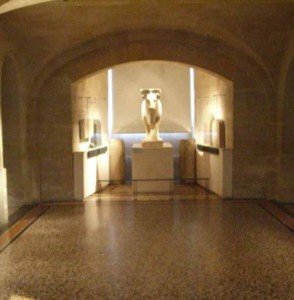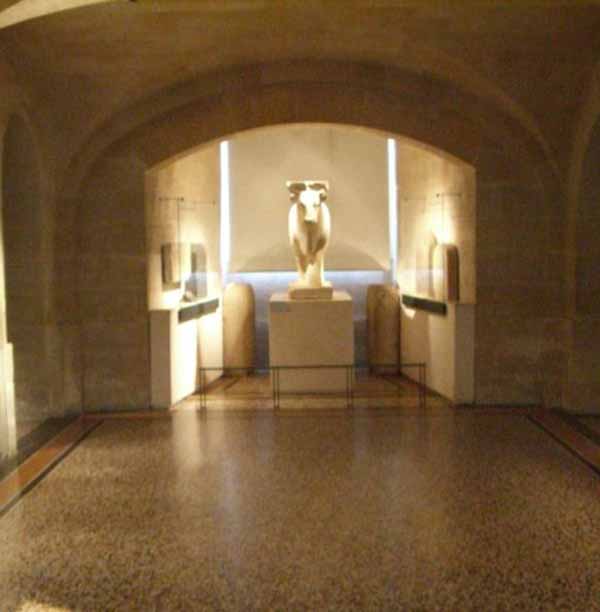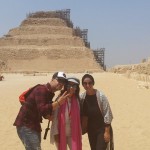The Serapeum of Saqqara
The Serapeum of Saqqara
The Serapeum of Saqqara is one of the most enigmatic places in Saqqara.
 At the time of Ramses II, the long driveway was discovered and throughout its 80m on each side, one could stop to pray and give offerings in multiple chapels covered with votive offerings that bordered it.
At the time of Ramses II, the long driveway was discovered and throughout its 80m on each side, one could stop to pray and give offerings in multiple chapels covered with votive offerings that bordered it.
The temple overlooking the graves is now completely ruined, but thanks to the foundations, it is estimated that with columns, pylons, narthex, and nave, he had measured nearly 300m wide, it is at the entrance of the Serapeum, Graves sacred bulls APIS.
On the left side, we pass one of those huge vats of granite that we tried to get out, but even with modern means, it was impossible!
In these long corridors dug in the rock is indeed 24 granite sarcophagi where were buried sacred bulls, nothing in the world looks like this necropolis.
We think that it is under Amenhotep III around 1380 BC, was inaugurated this huge burial and funeral rites are found still under the rule of the Ptolemies, hence the Greek name for Serapeum.
The cult of the sacred bull goes back before the Pharaonic era since traces were found in prehistoric caves like in Qurta near Kom Ombo in Upper Egypt specifically Aswan.
Apis was already venerated at the time of Narmer, the unifier of Upper and Lower Egypt around 3200 B.C.
At the time of ancient Egypt, Apis was considered as the living manifestation of the god Ptah, the demiurge, the creator.
The young bull was not randomly selected, the selection criteria were very specific, the Apis bull was black and had a white triangle-shaped spot on the forehead, a white spot in the shape of vulture at the back, and the hairs of the tail were doubled.
At his death, his spirit reincarnated in another young bull that the high priests searched for throughout the country.
When the French Egyptologist Auguste Mariette, following writings of Herodotus and Strabo, discovered this cemetery in 1851, his stupor was great because at the beginning of the processional, he discovered a large chamber containing twelve-size statues of the biggest Greek philosophers and poets. (What we can see today a part of it on the site and the other at Egyptian museum of Cairo).
All the tombs were looted over the centuries, only one remained intact.
It seems that it was Mariette who made a wide breach in it (with explosives are told).
He discovered an intact mummy (now destroyed) and numerous objects and princely jewelry, a gold mask, and amulets bearing the cartouche of Pharaoh Khaemwaset.
These huge sarcophagi made out of Aswan’s granite or out of basalt, each weight between 60 and 80 tons, (even almost 100 tons), Just a lid alone weighs 25-30 tons.
The body of the Apis was deposited there had been mummified for 70 days like pharaohs.
It was covered with a linen strip and was presented in the Sphinx position with the front legs folded.
Two of these mummies are still in the Agriculture museum of Cairo.
Each tomb consisted of a ramp leading to a burial chamber
The vague line of hieroglyphics seems to be dating not even the 18th dynasty.
One can read some writings of both Amasis 26th dynasty, Cambyses 27th, and Khababach, 333 B.C.
In the small underground, other bulls were entered, but in wooden sarcophagi that have not survived at their discovery and of which, only a few traces left today, they date back to the 18th dynasty
One of these sarcophagi still bore traces of the Cartouche of Tutankhamun and Horemheb.
The use of The Serapeum of Saqqara is amazing,
The Serapeum of Saqqara is always an enigma.
- Text: Gérard Chareyre






Leave a Reply
Want to join the discussion?Feel free to contribute!